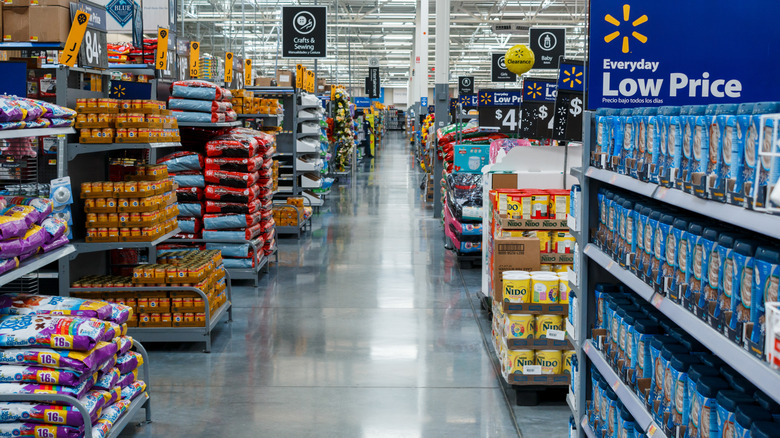Why Walmart Stock Took A Dive This Morning
Shocks to the supply chain, inflationary prices, shortages of certain foods along with essential products like infant formula... Customers and corporations alike have had a volatile couple of years, and reporting from outlets like CBS show conditions are unlikely to stabilize in the near term. Even large grocery stores are struggling — these companies have had to accommodate drastic changes in Americans' shopping habits, such as fluctuations in demand for individual products as well as a massive pandemic-fueled increase in online ordering and delivery, which was followed by a return to in-person store visits. And on the subject of fuel, The Street notes that heightened energy and freight costs have worked in tandem with these other factors to create a massive surplus in goods housed in retail stores across the country — many of which sought to get ahead of supply chain shortages and consequently ended up with an abundance of unwanted and unsold merchandise.
What will that mean for customers? Well, potentially, some relief in the form of steep discounts, which in many cases could not be better timed, as the country grapples with inflation and many Americans struggle to meet their basic needs amid soaring prices. How about for customers of the country's largest retailer, Walmart, and the company's shareholders?
Walmart's shareholders are feeling the squeeze
Investors are selling their shares in retail stores en masse in response to a warning contained in a "corporation report" by Target, The Street reports. Meanwhile, Bloomberg reported in mid-May that both Target and Walmart suffered their "worst trading days since 1987," deeming the ordeal a "big box bloodbath." It started when Target announced that inventories had swollen by 35% and stores would have to implement price cuts this summer to offload the surplus merchandise. The trading price for shares of Target and Walmart stock subsequently fell 3.5% and 1.45% respectively, followed by tumbling stocks at Home Depot, Costco, and Amazon.
Consumer goods retailers and food and beverage purveyors have faced unique challenges over the past few years, but these industries were hardly alone. The Standard and Poor's 500 (S&P 500) — which reports the performance of the 500 largest publicly listed American companies — has sunk to levels not seen since 1990, per The Street. And while consumer spending has begun to rebound from the austerity witnessed during the height of the Coronavirus pandemic, growth has been hampered by inflation, which has led consumers to exercise more caution, especially when it comes to discretionary purchases. The bottom line for the public as well as for businesses big and small: It looks like volatility and instability will persist, at least through this summer.

